Have you ever wondered what differentiates a business when navigating a competitive market? It’s not just about offering a service – it’s about ensuring every customer thrives. But how can your customers’ success secure your company’s future?
Customer success is more than issue resolution; it’s a strategic imperative focusing on nurturing relationships, improving satisfaction, and maximizing every client’s lifetime value.
Where retention is as crucial as acquisition, prioritizing customer success maintains happy customers and sustainable business growth.
What exactly makes customer success so important in achieving your business goals? Let’s explore how this approach transforms customer relationships from transactions into enduring partnerships for sustained business success and expansion.
What is customer success?
Customer success is a business strategy that aims to foresee and address customer challenges to enhance customer retention, satisfaction, and loyalty.
It emphasizes developing solid relationships, recognizing customers’ objectives, and aligning them with desired results. Critical elements of customer success include timely engagement, personalized support, and continuous assistance throughout the customer’s lifecycle.
It allows managers and teams to establish lasting customer connections, promoting long-term satisfaction and business growth.
Create a memorable user experience and maintain high levels of customer relations. 🤝 Try HelpDesk for free and communicate freely with users. 🔥
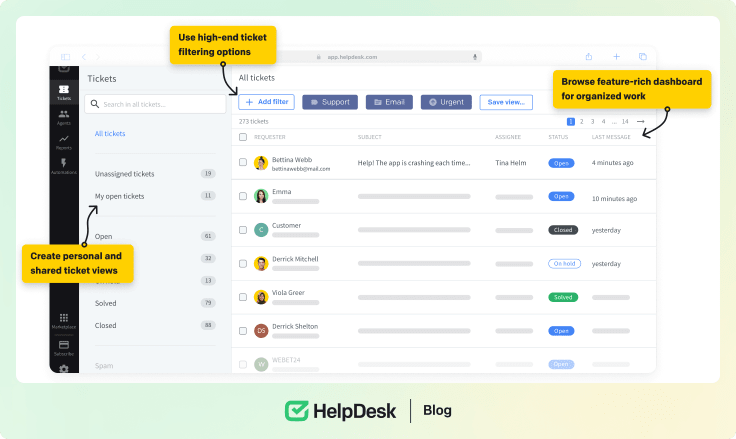
The role of customer success managers
Customer success managers (CSMs) bridge the gap between customer support and sales. They act as the customer’s primary point of contact, improve product value, reduce churn, and oversee the support teams from a high-level perspective.
They are responsible for:
-
Onboarding and account management: CSMs help onboard teams and act as mentors in their journey. They monitor customer satisfaction, identify issues, and take steps to resolve problems and expand usage.
-
Fast time to value: CSMs ensure quick success, reduce frustration, and prevent churn by showing customers how to use the product effectively to derive maximum value.
-
Client engagement: CSMs regularly check with clients to ensure consistent product usage. They monitor activity levels and address any issues that may arise, keeping customers happy.
-
Loyalty and reducing churn: Customer success management builds strong client relationships, earning trust and loyalty. It reduces customer turnover and reinforces the partnership’s value.
-
High-level support oversight: With a bird’ s-eye perspective, CSMs forecast potential trends affecting clients. It allows them to mitigate problems and help clients and the business.
-
Customer-centric environment: CSMs collaborate with various teams—customer service, sales, support, and product—to prioritize customer care. They voice customer concerns and track pain points for a unified approach to customer success.
Building a customer success team
To build a customer success team, you need a strategic approach to hiring, training, and structuring the team.
1. Hire the professionals
-
Identify key skills: Hire candidates with strong communication skills, problem-solving abilities, empathy, and a customer-centric mindset. Experience in account management, customer service, or sales will bring added value.
-
Cultural fit: The candidates should align with the company’s culture for a collaborative and positive work environment.
-
Industry knowledge: It’ll be a plus if your team members know a specific niche. They can better understand customer needs.
2. Structure your team
-
Define roles: Clearly explain the responsibilities of the customer success team. It can include customer success managers, onboarding specialists, technical support, and customer success analysts.
-
Team hierarchy: Establish a hierarchy or reporting structure for accountability and smooth operation. For example, senior CSMs oversee junior members or specific account teams.
-
Specialization: To prevent burnout, create specialized teams or roles for different customer segments, products, or stages of the customer journey.
3. Training and development
-
Onboarding program: Develop a starter guide for new hires. It should cover company culture, product knowledge, customer success principles, and the team’s specific tools.
-
Ongoing training: Implement training programs to update your team on new features, trends, and best practices. You can start with workshops, webinars, and certifications.
-
Soft skills: Provide training on essential soft skills such as communication, active listening, empathy, and conflict resolution.
-
Technical training: Take care of the support team training. Your team members should be proficient in the technical aspects of your product or service, such as troubleshooting common issues, understanding integrations, and using customer success platforms.
The customer success teams should understand key performance indicators (KPIs) such as customer satisfaction scores, retention rates, and upsell opportunities. Also, encourage collaboration with other departments, such as sales, marketing, product development, and support.
Be open-minded to continuously refine your customer success strategy and plan your team's work like a pro. 🦸
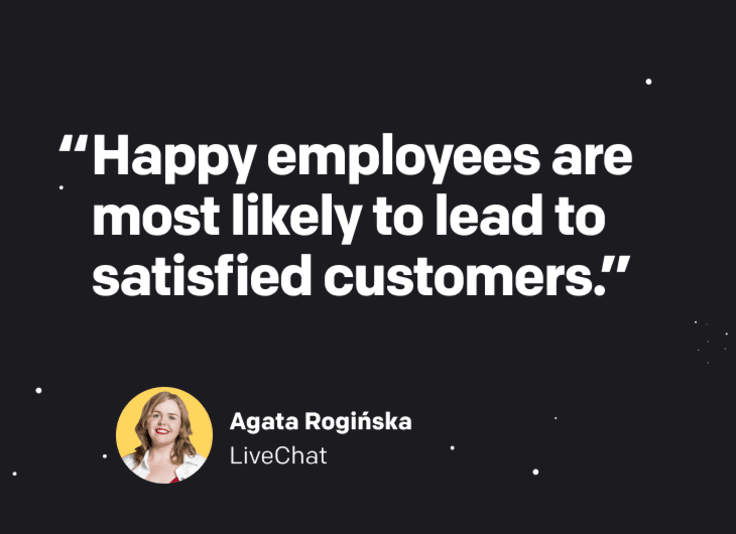
Key components of customer success
A successful customer success strategy ensures that customers derive maximum value from the product or service.
Two critical components are:
1. Technical enablement
Technical enablement involves setting up and optimizing a software solution to meet your customer’s needs. This process is governed by a statement of work (SOW) that defines the engagement’s deliverables, timeframe, and commercial structure.
-
Statement of work: The SOW is a formal document that outlines the scope of work, deliverables, milestones, timelines, and costs associated with the technical implementation.
-
Setup: During this phase, technical enablement teams work closely with customers to set up the software, configure settings, and integrate with existing systems.
-
Customization: It involves personalizing the software for a customer. It includes developing custom features, modifying workflows, and setting up specific user roles and permissions.
-
Ongoing support: Continuous technical support is necessary for issues that arise post-implementation. It can be done through regular check-ins, system updates, and maintenance.
Proper technical enablement allows smooth integration with the existing customer workflows, leading to fewer disruptions. As users feel confident and capable of using the software, you can encourage higher adoption rates.
2. Knowledge enablement
Knowledge enablement involves providing customers with the necessary information and skills to use the software solution.
-
Training programs: Develop how-to programs that cover all aspects of the software. You can try in-person training sessions, online courses, webinars, and self-paced learning modules.
-
Documentation: Provide detailed documentation, including user manuals, FAQs, and troubleshooting guides. It’ll be a resource for customers to reference when encountering issues.
-
Knowledge base: Create an online knowledge base that offers easy access to articles, tutorials, videos, and other educational content. You should regularly update it with new features.
-
Community and forums: Form a community where customers can share experiences, ask questions, and support each other. Forums and discussion boards can bring a sense of collective learning.
Customers who are well-informed and confident in using the software can achieve their goals and derive value from the product. When they have access to resources, they’re less likely to require extensive support, reducing your customer service cost.
Identifying growth opportunities and churn risk
Your customer success program should drive long-term growth and minimize churn. It involves the dual process of identifying growth opportunities and recognizing churn risks. You need keen observation, data analysis, and strategic action to support customers and prevent dissatisfaction.
The easiest help desk system for a team like yours
Discover HelpDesk
Growth opportunities
You must understand and recognize areas where customers can expand their product or service usage. To do so:
-
Monitor how customers use your product. Look for trends and patterns and find if they need additional features.
-
Collect and analyze customer feedback regularly. It can reveal unmet needs or desires for new functionalities. Surveys, interviews, and direct conversations are a good option.
-
Identify customers who might benefit from additional products or services you offer. Cross-sell or upsell as appropriate.
-
Stay informed about industry trends and innovations. You can introduce new developments to your customers as potential growth opportunities.
Based on usage data and feedback, provide recommendations to customers about how they can expand their use of your product. Also, connect with customers to discuss their goals, review their usage, and improve customer experience.
Expanding customer usage can increase sales and their perception of value, leading to greater satisfaction and loyalty.
Collect feedback more effectively with HelpDesk. Learn how to do that in our Learning Space lesson. 🚀

Churn risk
Identifying churn risk involves finding signs of dissatisfaction or disengagement in customers and taking measures to address them before they result in the customer leaving.
-
You can track engagement metrics such as login frequency, feature usage, and time spent on the platform. Declines in these metrics can indicate a risk of churn.
-
Monitor the volume and nature of support tickets. A high number of unresolved issues or recurring problems can signal dissatisfaction.
-
Pay close attention to negative feedback, complaints, and low satisfaction scores and mitigate the situation.
-
Be aware of competitor activities. If a competitor launches a new feature that addresses a common pain point among your customers, they may be at risk of switching.
When signs of customer churn risk are detected, contact the customer and provide tailored solutions to address their specific issues. Consider implementing loyalty programs or incentives to promote long-term commitment, such as offering discounts, extending trial periods, or granting exclusive access to new features.
It’s essential to keep communication channels open with customers and prioritize their success, ensuring they feel acknowledged and appreciated.
Join our HelpDesk Partner Program and establish more effective collaborations. 🤝
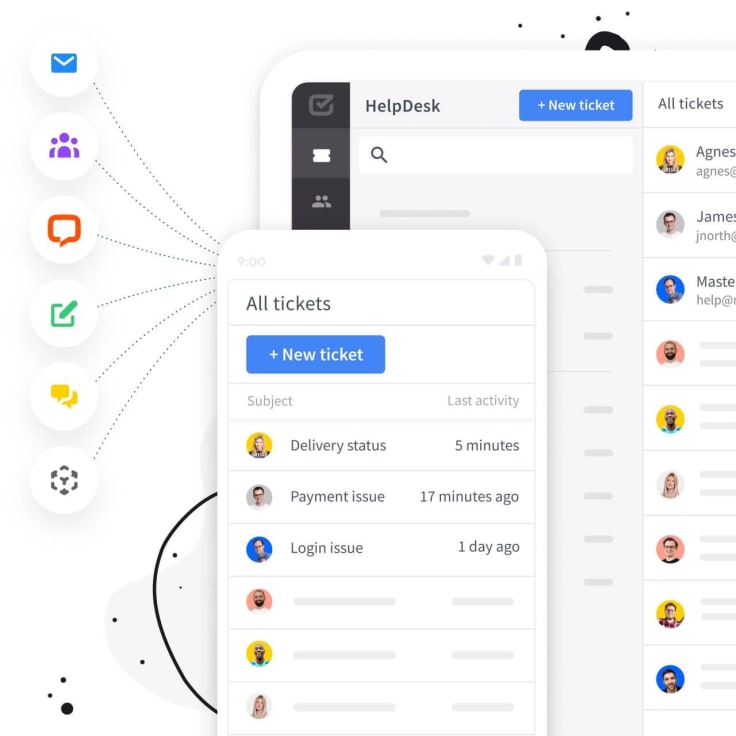
Leveraging technology for customer success
Technology is a customer success solution, as you need effective management of customer relationships, data, and interactions. You can try:
Customer relationship management (CRM) platforms
CRM platforms are centralized systems designed to manage a company’s interactions with current and potential customers. They help businesses streamline processes, improve customer relationships, and increase profitability.
The key features include:
-
Centralized database: CRM systems consolidate customer information into a single database, making accessing and managing customer data easy.
-
Automation: The platforms automate routine tasks such as data entry, follow-up emails, and appointment scheduling, freeing up time for customer success managers to focus on more strategic activities.
-
Interaction tracking: These platforms track all customer interactions, including emails, phone calls, meetings, and social media interactions, for a quick view of the customer relationship.
-
Value realization: The platforms help quantify the value customers receive from the product or service. It involves tracking KPIs and demonstrating ROI to customers.
-
Reporting and analytics: CRM systems offer analytics capabilities for client success. You can monitor KPIs, track progress, and identify trends.
-
Customization: You can customize the platform per industry, business model, or other unique requirements.
Customer success management focuses on health scores and churn prediction models to address issues before they escalate for reduced customer churn and increased retention. By quantifying and demonstrating the value customers receive, businesses can strengthen relationships and justify renewals and upsells.
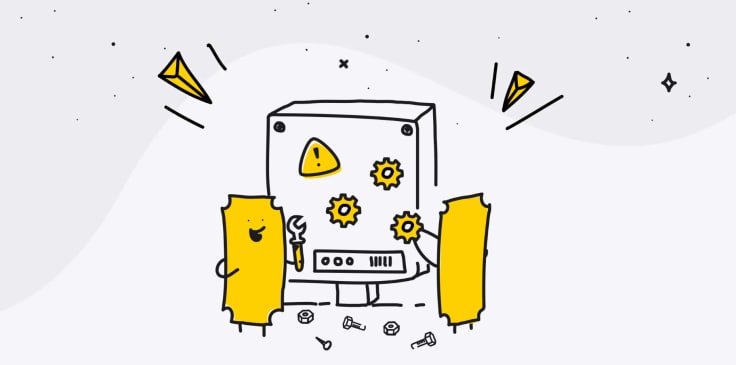
Let your customers succeed with HelpDesk
HelpDesk offers multiple tools for managing customer interactions and support. You can log, track, and prioritize customer inquiries and problems through a unique ticketing system. The customer support teams can then efficiently manage and resolve issues.
It also facilitates the resolution of customer cases by providing a platform for support agents to communicate with customers, troubleshoot issues, and offer solutions.
HelpDesk also allows communication between support agents and customers through various channels. The flexibility helps clarify doubts, provide updates, and maintain a transparent line of communication.
The automation and AI-based features within HelpDesk streamline repetitive tasks and route tickets to the appropriate departments. It also provides quick responses to common queries for customer success work.
Customer success teams can use it to reach out to customers, offer assistance, and ensure they are maximizing the value of the product or service.
HelpDesk is here for you. Try its free 14-day trial to experience all its exceptional features. Learn more 📚
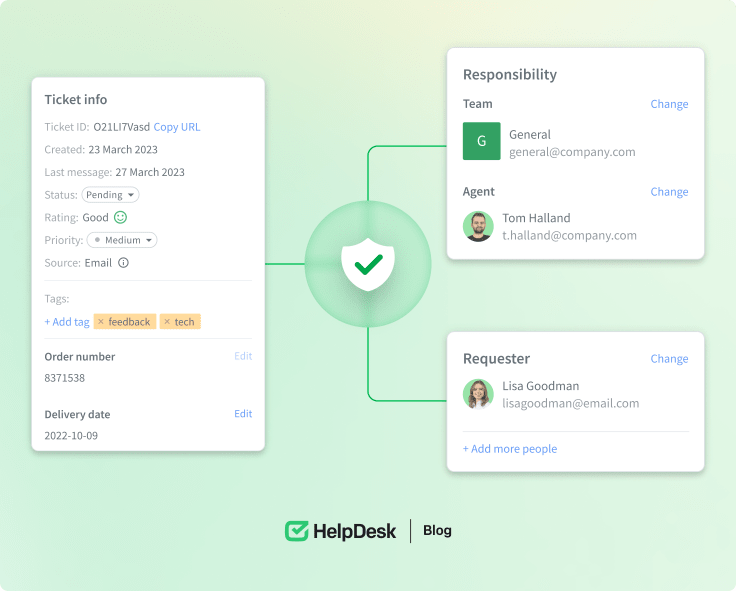
The importance of a customer success manager
A customer success manager is a linchpin between a company and its customers. Personalized engagement strategies and professional services can enhance customer satisfaction and reduce churn.
-
CSMs act as trusted advisors to customers. They can offer guidance by understanding the business goals, challenges, and objectives. Their approach goes beyond reactive customer service.
-
Effective CSMs are instrumental in helping customers achieve their outcomes. They serve as advocates within the company, ensuring that customer needs are prioritized and addressed across departments, from sales and marketing to product development and support.
-
Customer success managers actively monitor customer health metrics, identifying signs of dissatisfaction or churn risks. Then, they implement measures and mitigate issues before they escalate.
The importance of a success manager extends beyond retention metrics. It includes driving revenue growth, improving customer loyalty, and influencing the business’s success.
Integrating customer success into your business strategy
You can embed customer success principles into every facet of your enterprise, from product development and sales to customer support.
Remember, customer success is not just about retaining customers but also about maximizing their lifetime value. Some strategies in this regard include:
-
Executive alignment and buy-in: Successful integration begins with executive sponsorship and alignment. Leadership must recognize customer success and prioritize it within the broader business strategy.
-
Data-driven analytics: Utilize data and analytics to gain actionable insights into customer behavior, preferences, and satisfaction levels. Customer success teams can use metrics such as customer health scores, usage patterns, and feedback to identify opportunities and intervene before issues escalate.
-
Quick support: Implement customer engagement strategies that go beyond reactive support. The team should understand customers’ evolving needs and build trust to strengthen the customer relationship over time.
-
Customer-centric mindset: Integrating customer success requires a shift in mindset across the organization. It requires viewing every interaction, decision, and initiative through how it contributes to the customer’s success.
-
Feedback loop: Establish a continuous improvement process by collecting, analyzing, and acting on customer feedback. Implement mechanisms for gathering feedback through surveys, reviews, and direct interactions.
-
Measure your success: Establish clear metrics and KPIs to measure the effectiveness of your customer success initiatives. Monitor metrics such as customer retention rates, net promoter score (NPS), customer satisfaction scores, and lifetime value to analyze the impact of your strategies.
Summary
Customer success is undeniably essential for the growth of any organization. Focusing on customer success and satisfaction throughout their journey can help retain existing customers and foster loyalty and advocacy.
Satisfied customers are more likely to buy again, expand their usage, and share their positive experiences, contributing to revenue growth.
Your customer success initiatives should promote a culture of responsiveness, innovation, and continuous improvement. By utilizing the information from this article, you can be a trusted partner in customers’ success stories.


